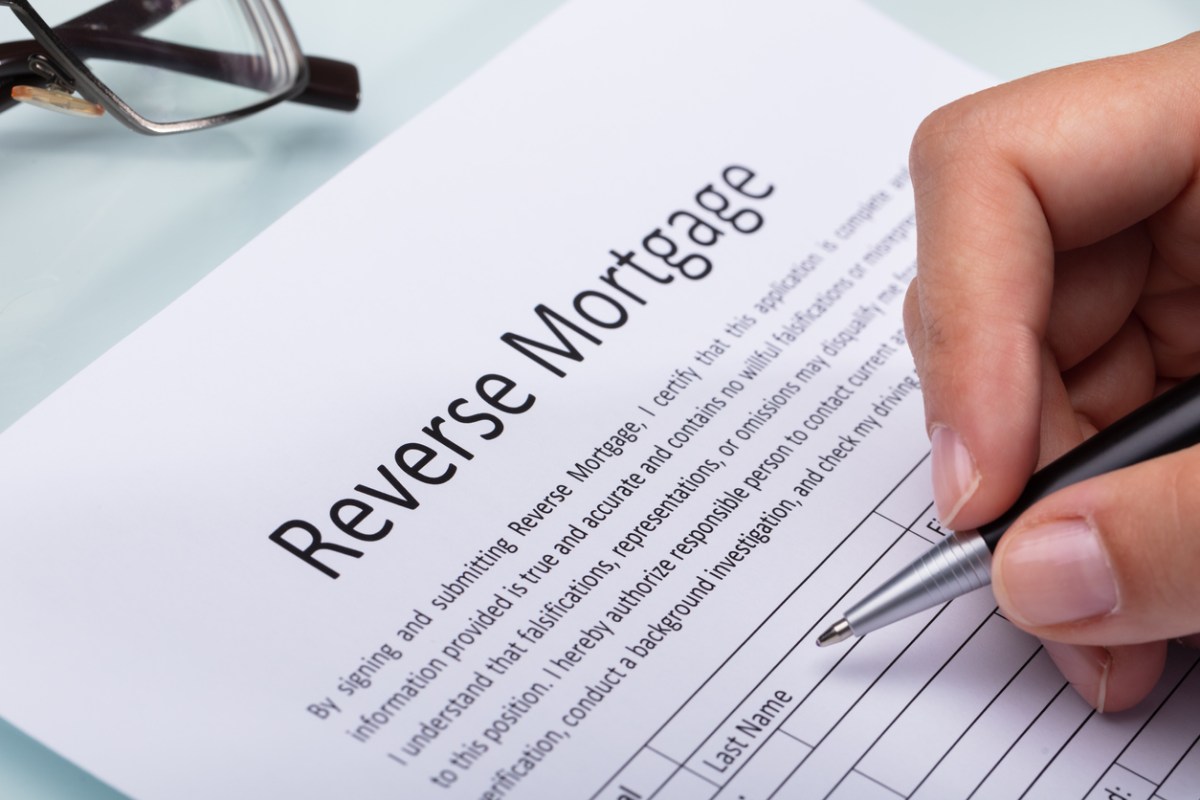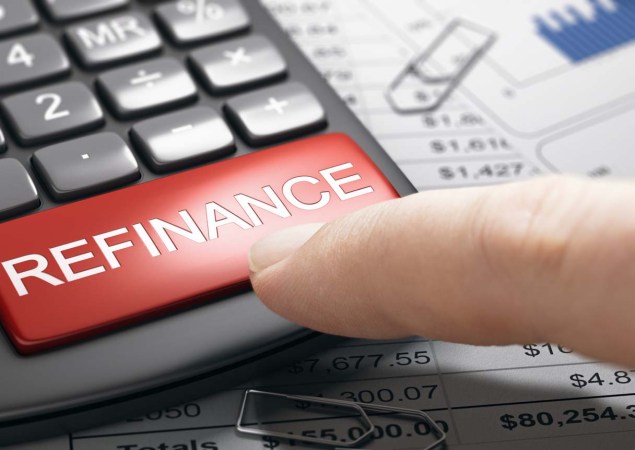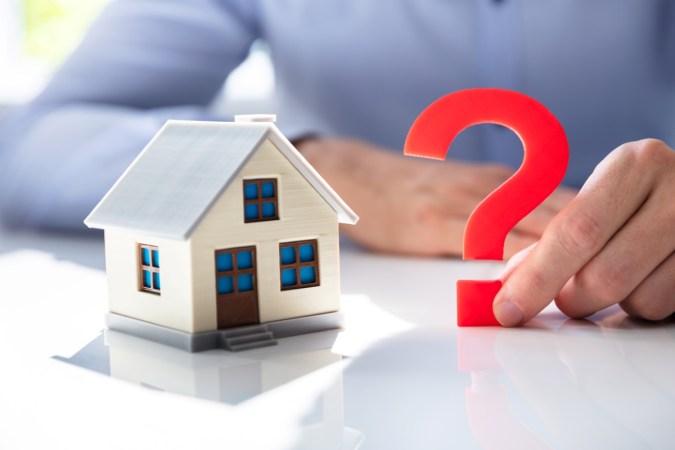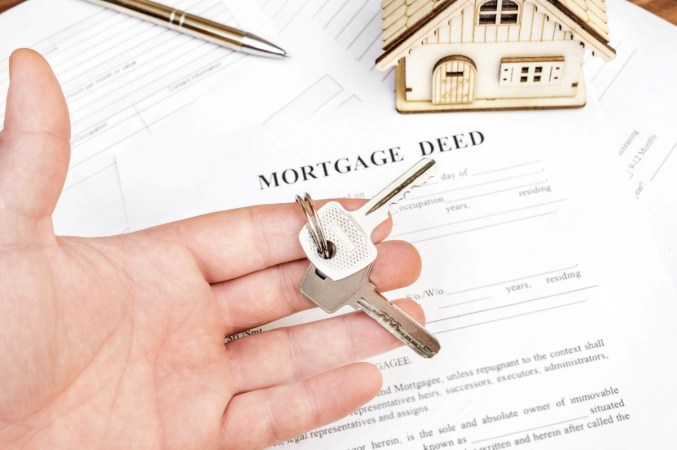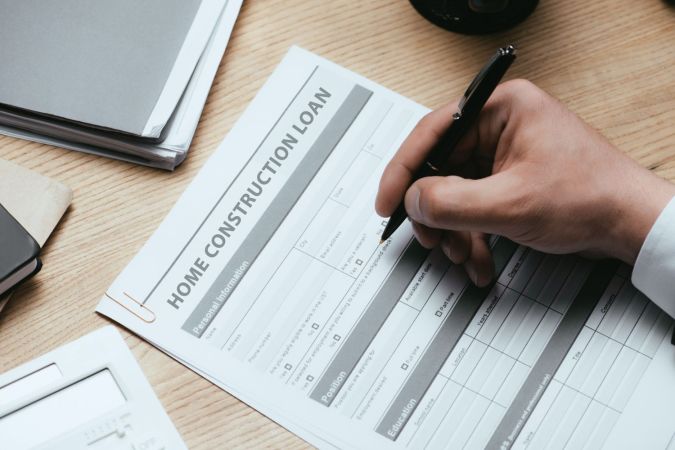We may earn revenue from the products available on this page and participate in affiliate programs. Learn More ›
Q: I’m a few years into retirement and starting to get worried that my pension and savings won’t be enough to cover my regular expenses. My neighbor suggested taking out a reverse mortgage since I own my house free and clear, but it seems pretty complicated. How does a reverse mortgage work?
A: Reverse mortgages can be a great help for retirees and older adults who want to maintain a certain quality of life without going through their savings too quickly. Because this type of financing can be confusing, though, it can be helpful to have a reverse mortgage explained in the most straightforward terms.
How does a reverse mortgage work, exactly? In essence, the homeowner takes out a loan based on the equity that they’ve built up in their own property. It’s called a reverse mortgage because the lender pays money to the borrower for the duration of the loan, rather than the other way around.
In the right circumstances, reverse mortgages can offer added financial flexibility to people who are retired and no longer earn a steady income. This type of mortgage is not going to be a perfect fit for every homeowner, though, so it’s good to brush up on the finer points relating to reverse mortgages before making a decision.
A reverse mortgage works by converting the borrower’s home equity into a loan paid out by the mortgage lender.
Homeowners who come across reverse mortgages as a financing option may wonder, “What is a reverse mortgage, exactly?” It’s a particular type of home loan meant to help older adults use their home equity to cover expenses—large or small—later in life. To take advantage of a reverse mortgage, borrowers will need to have first accumulated a significant amount of equity in their home. Like home equity loans or home equity lines of credit (HELOCs), reverse mortgages let homeowners take out loans based on the equity—or ownership stake—they have in the property.
Many older adults who have lived in the same home for a long period of time will likely have built up a sizable amount of equity in their property—they may even own their house outright. Rather than let that equity sit unused until the day they sell their home, eligible homeowners can tap into it through a reverse mortgage to pay for any manner of expenses or purchases.
Borrowers will not be able to cash out their entire equity stake, however, and federal regulations may cap loan amounts at certain limits, depending on the type of reverse mortgage used. Lenders will also account for a variety of other factors when determining the amount of the loan, including the borrower’s age, the property’s market value, the homeowner’s financial situation, and any existing debts or liens.

With a reverse mortgage, the lender will make payments to the borrower, rather than the other way around.
Any reverse mortgage definition will likely focus on role reversal as it relates to the relationship between lenders and borrowers. As noted, reverse mortgages flip the typical roles of these two parties. With a traditional mortgage, the borrower makes monthly payments to the lender until their outstanding loan balance has been repaid. Conversely, after taking out a reverse mortgage, the borrower will receive payments from the lender—typically either in the form of a monthly installment or a lump-sum deposit.
As with any loan, the balance will need to be repaid eventually—plus interest—but that could be years down the road. In some cases, borrowers never repay the balance on their reverse mortgage.

Borrowers will need to meet certain eligibility requirements first, though—including their age and the amount of home equity they own.
Unless they’re working with a nonprofit, local government agency, or private lender, borrowers who take out a reverse mortgage will likely use a home equity conversion mortgage (HECM), which is backed by the federal government and provided by a mortgage company. HECM loans are not available to all homeowners; borrowers will need to meet certain criteria to qualify for this type of financing.
For instance, only homeowners age 62 or over are eligible for an HECM loan. In addition, borrowers must have accumulated a sizable amount of equity in their home. The exact amount could vary, but a 50 percent equity stake will usually suffice. Borrowers are often required to be up to date on their housing-related financial obligations, including property taxes and homeowners insurance premiums.
Homeowners considering an HECM loan will first need to attend a financial counseling session as required by the U.S. Department of Housing and Urban Development. This session is tailored to each household’s financial situation to help homeowners understand the potential downsides to taking out this kind of loan and then make a more informed decision regarding reverse mortgages.
Reverse mortgage loans can be paid out as lump sums, recurring payments, or lines of credit.
How do reverse mortgages work after the loan has been approved? Homeowners can access their funds in a few different ways. Many borrowers choose a tenure or term plan, both of which split loan funds into equal payments that are paid out every month for an extended period of time. These plans could be good options if homeowners want to use these funds to pay for routine expenses such as groceries or household items.
Another option to consider is receiving the entire loan amount all at once. Homeowners may prefer a lump-sum payment if they have a major expense that they want to cover—extensive home renovations or repairs, for example. Lenders may also extend a line of credit using the borrower’s home equity. In this scenario, homeowners could take out as much money as they like—whenever they like—up to the balance limit.
When considering disbursement options, note that lenders may charge different reverse mortgage rates—including fixed or variable interest—depending on how the funds are made available. Reverse mortgages with recurring monthly payments may be more likely to carry variable interest rates, which can go up or down, so they better reflect mortgage rate trends throughout the life of the loan.
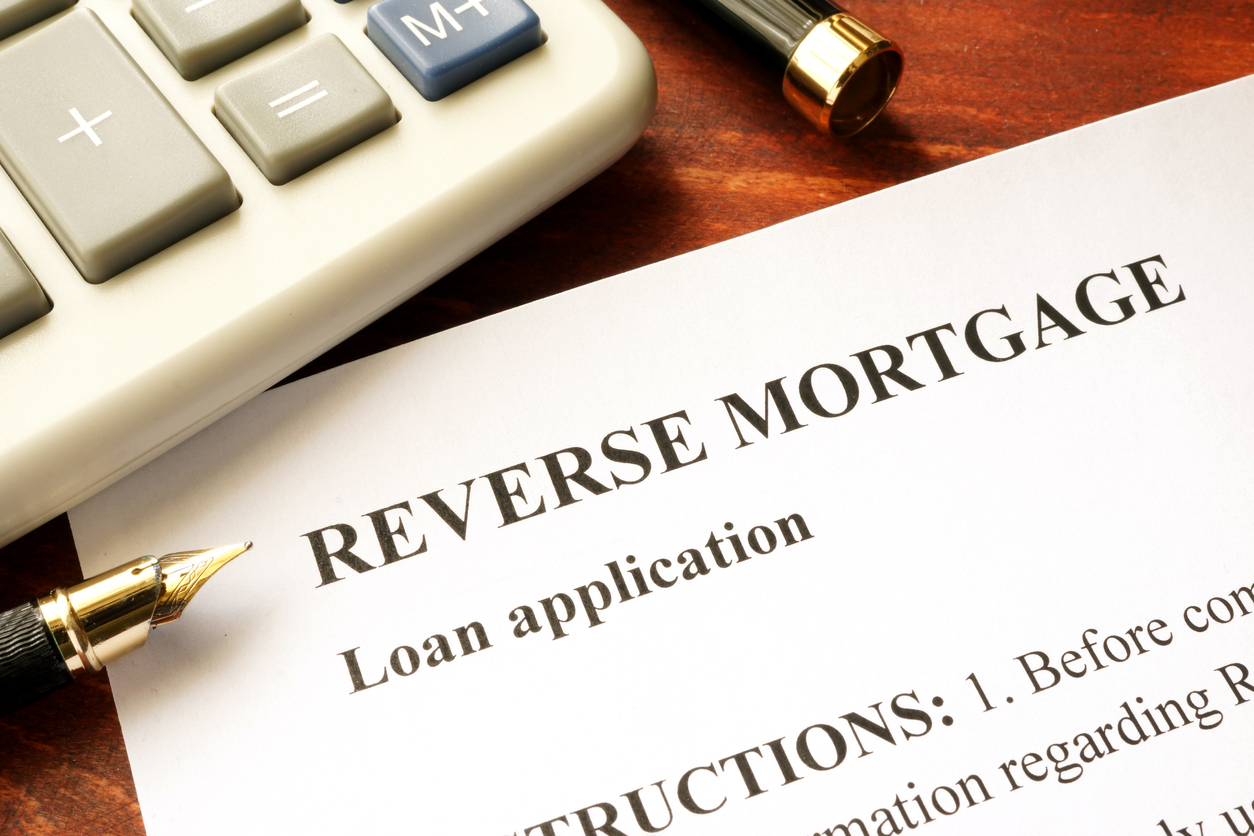
Lenders typically don’t restrict how reverse mortgage funds are used, either.
Regardless of what type of payment plan a homeowner chooses, HECM lenders typically will not limit how a homeowner may use their reverse mortgage funds. If a borrower wants to spend that money on bills, home renovations, car payments, or other expenses, they’re free to do so. Some types of loans—home renovations loans, for instance—can restrict how funds are used, so this financial flexibility could be appealing to some homeowners.
Other types of reverse mortgages may not always be so accommodating, however. In particular, single-purpose mortgages—which are provided by nonprofit organizations and local governments rather than mortgage companies—often require borrowers to state the purpose of the loan before it will be approved. Borrowers may still have several ways to use their funds with this kind of reverse mortgage—such as replacing appliances, repaying debt, or paying outstanding property taxes—but they will need to state that purpose up front.
Even better, borrowers don’t need to repay the loan until they move out of the home, sell the property, or transfer ownership to a loved one.
Reverse mortgages are not the only loans that tap into home equity—HELOCs and home equity loans work by converting equity into cash as well—but the way they’re structured is pretty unique. Unlike other types of home loans that require borrowers to start repaying the balance right away, reverse mortgages don’t need to be repaid as long as the borrower retains ownership of the property. That means they won’t be required to pay back the loan amount until they sell the home or transfer ownership to another party.
In some cases, borrowers will choose to downsize and use the proceeds from the sale of their home to repay the balance on their reverse mortgage. There may even be enough left over to cover the purchase of the new home. Other homeowners may have no intention of ever paying back the loan because they don’t plan to ever sell their house. If the loan outlives the borrower, then they won’t be required to repay it.
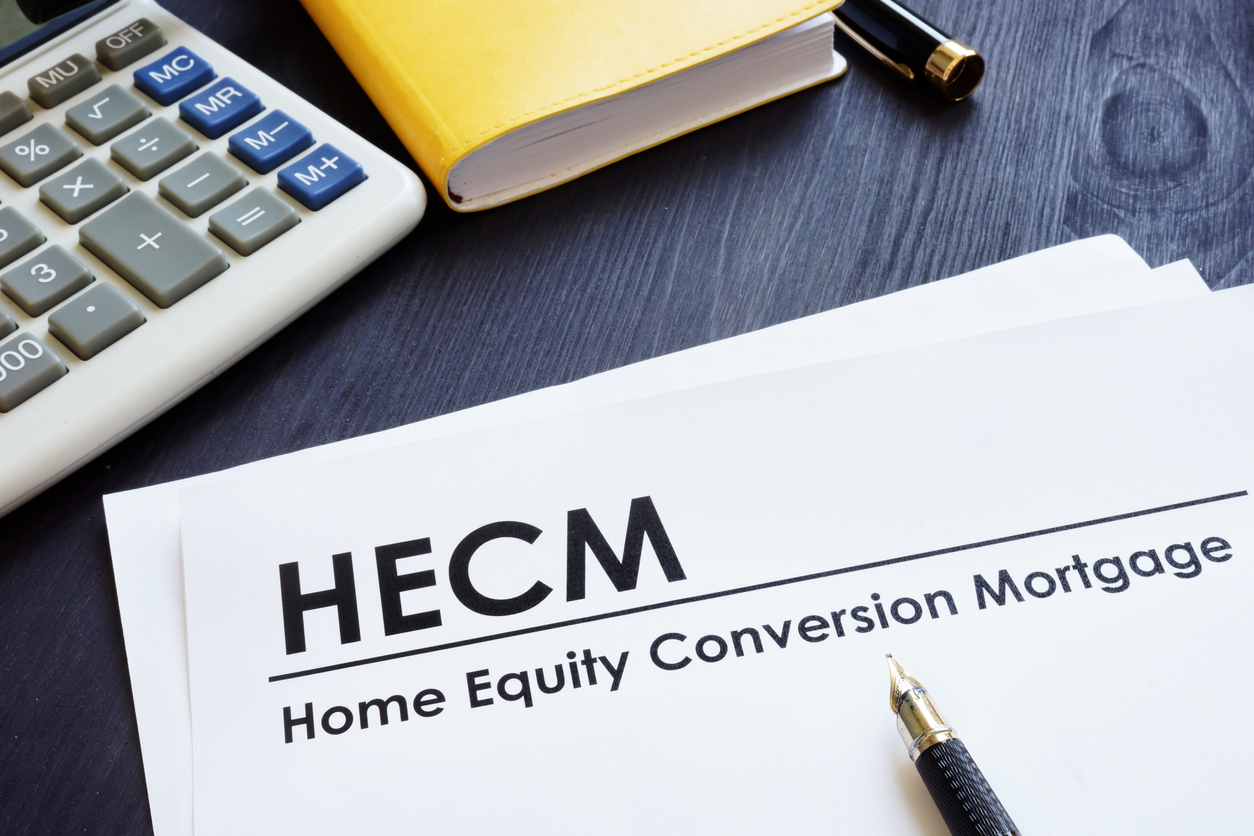
While their home will be used as collateral on the loan, borrowers don’t owe taxes on any funds they receive.
When answering the question “What’s a reverse mortgage?” it’s worth noting that these loans are secured loans—in other words, they’re backed by collateral. Like all secured home loans, reverse mortgages use the borrower’s property as collateral. That does make foreclosure a possibility, but only if the lender voids the loan agreement and demands full repayment on the outstanding balance. As long as the borrower continues to meet the terms of the mortgage agreement, such as maintaining the property, using it as a primary residence, and staying current on other housing costs like property taxes, they should be in good standing with their lender.
Although borrowers will need to continue paying property taxes, they won’t owe taxes on their reverse mortgage funds because that money is considered a loan rather than taxable income. That’s a financial consideration worth taking into account since homeowners may need to pay taxes on other retirement accounts or financial assets they own.
Borrowers will pay some costs on their reverse mortgage, though—both up front and down the road.
Even with all the financial benefits that a reverse mortgage can offer, borrowers will likely need to pay some money up front to take out one of these loans. Origination fees, lender service fees, and various closing costs may be due after the reverse mortgage is approved. Depending on a person’s financial situation, those costs may be worth the expense to get access to reverse mortgage funding, though.
In addition, HECM loans charge an insurance premium at the outset of the loan, which is based on a percentage of the total loan amount. Borrowers will need to pay a mortgage insurance premium each year as well. The annual premium is also reflected as a percentage of the loan amount, albeit a smaller percentage than the initial charge. Lenders charge interest on these loans too, and reverse mortgage rates may be higher than other types of secured financing.
Another factor to keep in mind is that some lenders may allow borrowers to finance some of those fees and build them into their repayment plan. In that case, mortgage insurance premiums, closing costs, and lender fees may not be due for several years until the full loan amount is repaid. Given the way that reverse mortgages are structured, it’s possible that borrowers will never need to pay these fees themselves.

Also, family members and loved ones may need to repay the full loan balance if the property passes into their hands.
Even though borrowers may be able to avoid paying back their reverse mortgage, that loan will need to be repaid eventually. If the borrower dies and the property title passes to their heirs, then those new title owners will be responsible for any outstanding balance. Family members who inherit property with a reverse mortgage will find that the entire remaining loan amount will need to be paid back in full without delay.
Some title owners could have the funds available to pay the full loan balance, but family members may need to resort to selling the property to repay the original reverse mortgage—meaning heirs could lose a portion or all of their inheritance. One point to consider with HECM loans is that even if the home is sold for less than the outstanding balance, property owners—whether it’s the original borrower or their heirs—will not need to make up the difference. Because these reverse mortgages are federally insured, the government will cover whatever amount is left on the loan.
Private lenders may offer reverse mortgages too, but be on the lookout for potential scams.
Homeowners who take out HECM loans can usually rest easy knowing that their reverse mortgage is backed by the federal government and provided by a reputable lender. Borrowers who get financing through a private lender may need to exercise more caution, however. As the Consumer Financial Protection Bureau noted, scammers may use reverse mortgages as a pretense to defraud homeowners and take advantage of their finances.
In particular, veterans and retired service members should be on alert for any lender advertising reverse mortgages that are insured, funded, or backed by the Department of Veterans Affairs (VA). The VA does not offer reverse mortgages in any way, and private lenders that say otherwise may have ulterior motives for issuing misleading statements to homeowners.
While it may not necessarily constitute a scam, contractors may aggressively push reverse mortgages as a way to pay for expensive home renovations, pressuring homeowners into taking out a home loan. It’s important to fully understand the ramifications of using a reverse mortgage before making a financial decision that may not be right for a homeowner’s circumstances.

Not all lenders offer reverse mortgages, so retirees may need to consider switching lenders if they want to tap into their home equity.
Reverse mortgages, home equity loans, and HELOCs are highly specialized forms of financing, and some mortgage companies may not support them. Homeowners who have stayed with the same lender for years may prefer to take out a loan with their current mortgage company, but they may need to consider exploring other options if these loans are unavailable and they want to take advantage of the best home equity loans or reverse mortgages.
In fact, shopping around for a reverse mortgage can be a good idea in any situation because lenders have their own eligibility requirements and financing terms. Homeowners may find that they qualify for a larger loan amount with more favorable terms—like a lower interest rate or lower up-front costs—by getting a reverse mortgage through a particular lender. Shopping around with the best reverse mortgage companies (such as American Advisors Group or Longbridge Financial) can help homeowners find the right financing options to suit their retirement plans before applying for a loan.

